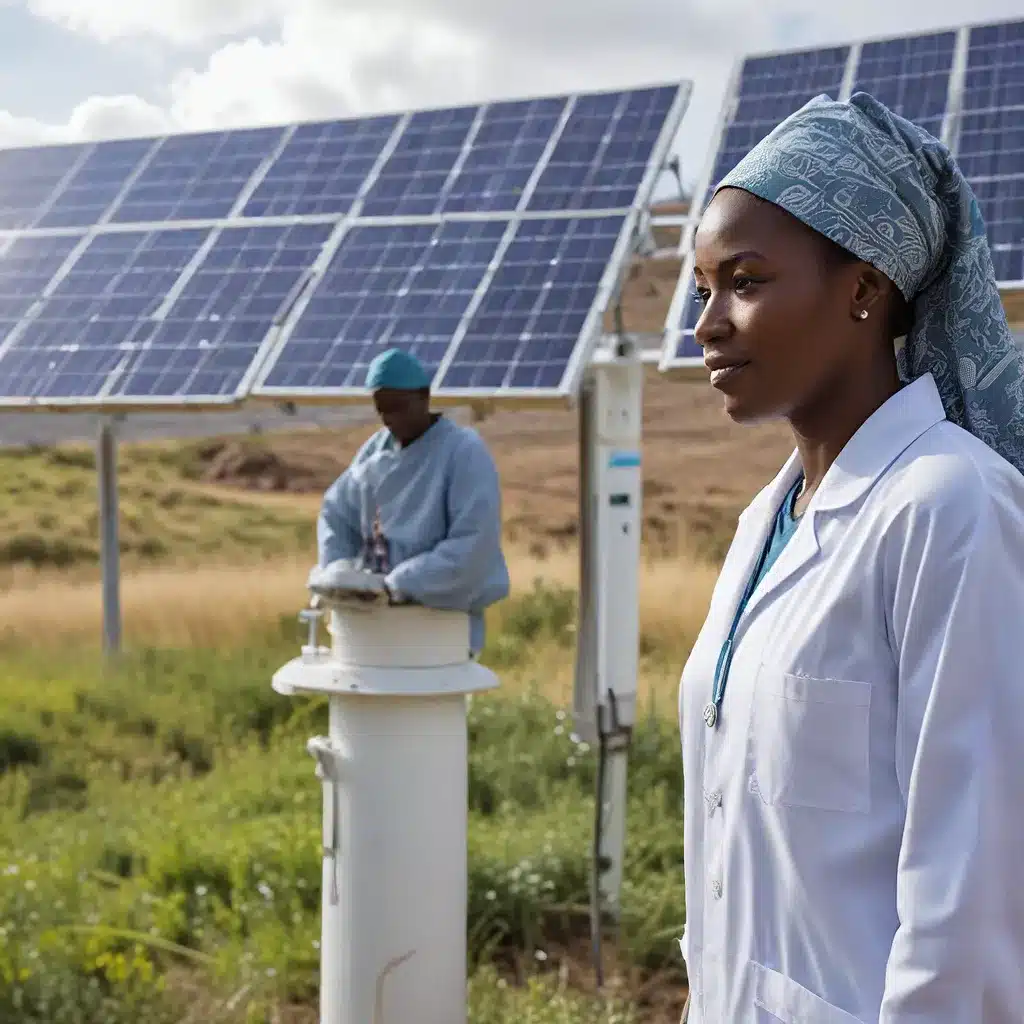
Unlocking the Power of Renewable Energy for Better Healthcare
As I delve into the intersection of renewable energy and global health, I can’t help but feel a sense of both urgency and optimism. The COVID-19 pandemic has shone a harsh spotlight on the critical role that reliable electricity plays in delivering essential medical services, a reality that has long been overlooked in many parts of the world.
In developed nations, we take for granted the fact that the lights will stay on, the medical equipment will function without interruption, and the cold chain for vaccines will remain intact. But for hundreds of millions of people in sub-Saharan Africa and rural India, this is simply not the case. A staggering one in four health facilities in sub-Saharan Africa lack access to electricity, while nearly 40,000 government health centers serving 580 million rural Indians operate without power.
This stark reality has very real and devastating consequences. Imagine a rural clinic struggling to provide care in near-darkness, relying on kerosene lamps and cell phones to perform basic procedures. Or a maternity ward where life-saving equipment lies dormant due to unreliable electricity. It’s a sobering thought, and one that Bill Gates has rightfully warned could lead to “very, very dramatic consequences” as the COVID-19 crisis unfolds.
But amidst this gloom, there is also a glimmer of hope. Distributed renewable energy (DRE) solutions, such as standalone solar and mini-grids, offer a cost-effective, rapidly deployable, and reliable solution to electrify healthcare centers and transform lives. And the evidence is mounting that these renewable energy interventions can have a profound impact on global health outcomes.
Renewable Energy Powering Healthcare’s Transformation
The United Nations Development Programme (UNDP) has made significant strides in this area, installing solar PV systems in 900 health facilities across 11 countries, including 388 facilities in Zimbabwe. This initiative, designed to increase access to health services, reduce carbon emissions, and improve power supply, is a shining example of the potential for renewable energy to revolutionize healthcare delivery.
But it doesn’t stop there. The We Care Solar organization has taken an even more targeted approach, delivering more than 5,000 compact “Solar Suitcases” to maternal health facilities in Africa and Asia. These innovative devices provide reliable power for critical life-saving procedures, ensuring that frontline health workers can see what they’re doing and have the tools they need to deliver safe, high-quality obstetric care.
In India, the Chhattisgarh State Renewable Energy Development Agency (CREDA) and the State Health Department have collaborated to install solar PV systems in 900 Primary Health Centres (PHCs) across the state. The results have been remarkable, with approximately 80,000 patients benefiting from these electrified health centers every day, leading to improved health outcomes. And the best part? This program could be extended to 40,000 health facilities across India for just $85 million – a small price to pay for the transformation it could bring.
These are just a few examples of the powerful impact that renewable energy solutions are having on global healthcare. But the true potential of this intersection goes far beyond simply powering medical facilities. It’s about creating resilient, adaptable health systems that can withstand the challenges of the 21st century, from climate change to future pandemics.
Renewable Energy and the Future of Global Health
When we think about the UN Sustainable Development Goals (SDGs), Goal 3 – “Good Health and Well-Being” – is inextricably linked to Goal 7, which aims to ensure “Affordable and Clean Energy for All.” After all, how can we expect to achieve universal healthcare when so many health facilities lack the most basic of necessities: reliable electricity?
This is where the Health Electrification and Telecommunications Alliance (HETA), a partnership between the United States Agency for International Development (USAID) and the private sector, comes into play. By assembling the world’s leading renewable energy, digital technology, and health solutions providers, HETA is working to electrify and digitally connect 10,000 health facilities in sub-Saharan Africa by 2027.
It’s a bold and ambitious goal, but one that is absolutely essential if we are to make meaningful progress towards the SDGs. Because without access to reliable power and digital connectivity, health facilities cannot keep the lights on for nighttime births, run the equipment that keeps vaccines viable, or modernize their communication and records management systems.
And the benefits of this approach go far beyond just the health sector. By investing in renewable energy solutions for healthcare, we’re also creating sustainable economic opportunities in the communities that need them most. From the installation and maintenance of solar panels to the manufacturing of energy-efficient medical devices, these initiatives are generating jobs and economic activity that can have a lasting impact on local development.
Powering a Healthier, More Equitable Future
As I reflect on the journey we’ve taken, I’m struck by the sheer transformative potential of renewable energy in the realm of global health. It’s not just about providing power – it’s about empowering communities, strengthening health systems, and paving the way for a more equitable and sustainable future.
Sure, there are still challenges to overcome, from securing the necessary financing to overcoming entrenched barriers to adoption. But with the Multilateral Energy Compact for Health Facility Electrification aiming to electrify 25,000 health facilities by 2025, and game-changing initiatives like HETA and the HealthGrid Sierra Leone program, I can’t help but be optimistic about the road ahead.
Because when you think about it, renewable energy and global health are two sides of the same coin. They’re both about improving lives, building resilience, and creating a better world for all. And by harnessing the power of the sun, the wind, and the earth, we have the opportunity to do just that – one health facility, one community, and one life at a time.
So, let’s explore the possibilities together. Who knows what extraordinary things we might achieve when we harness the power of renewable energy to transform global healthcare? The future is bright, my friends – let’s go make it happen.

